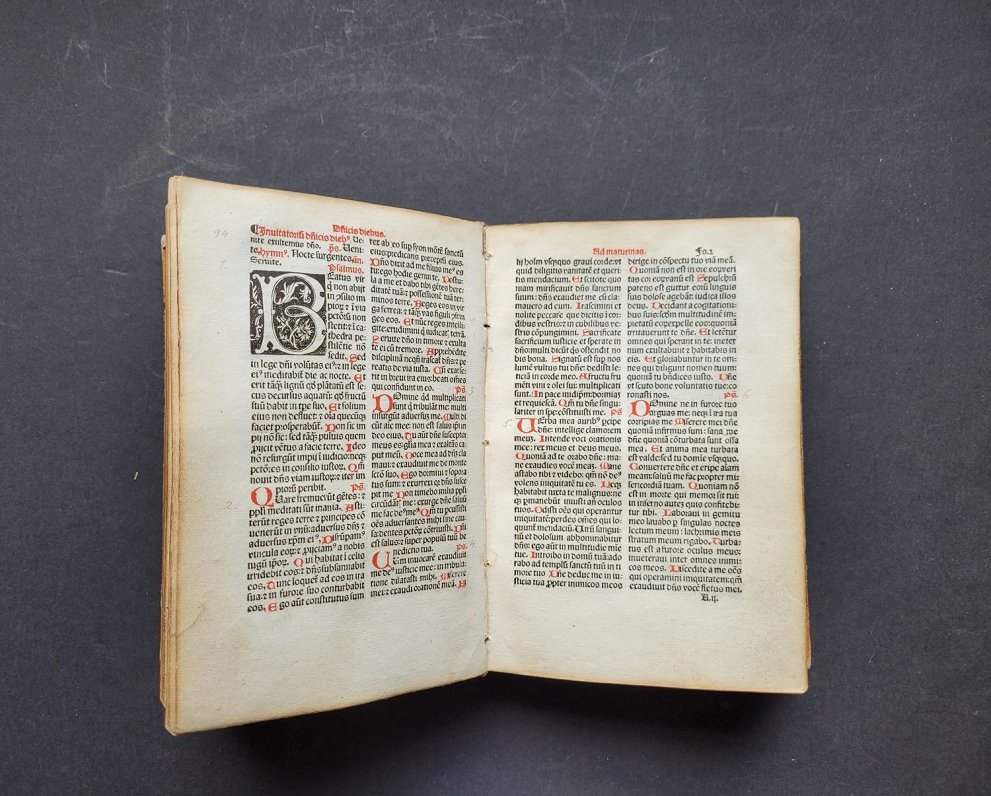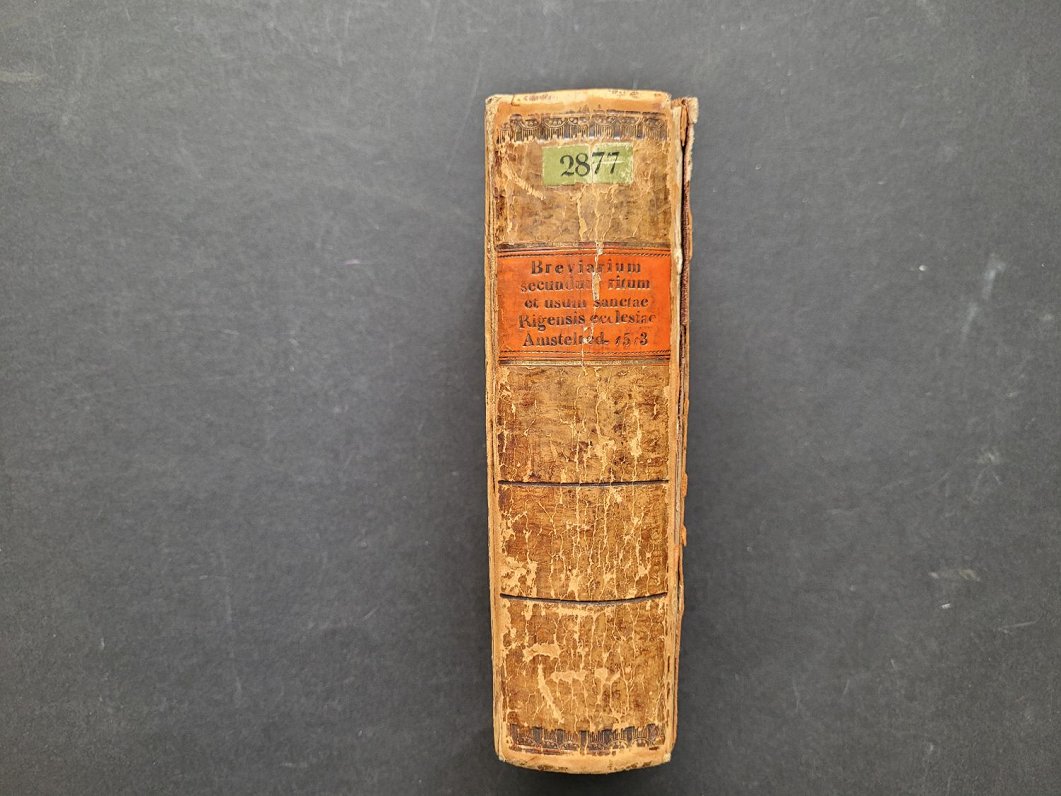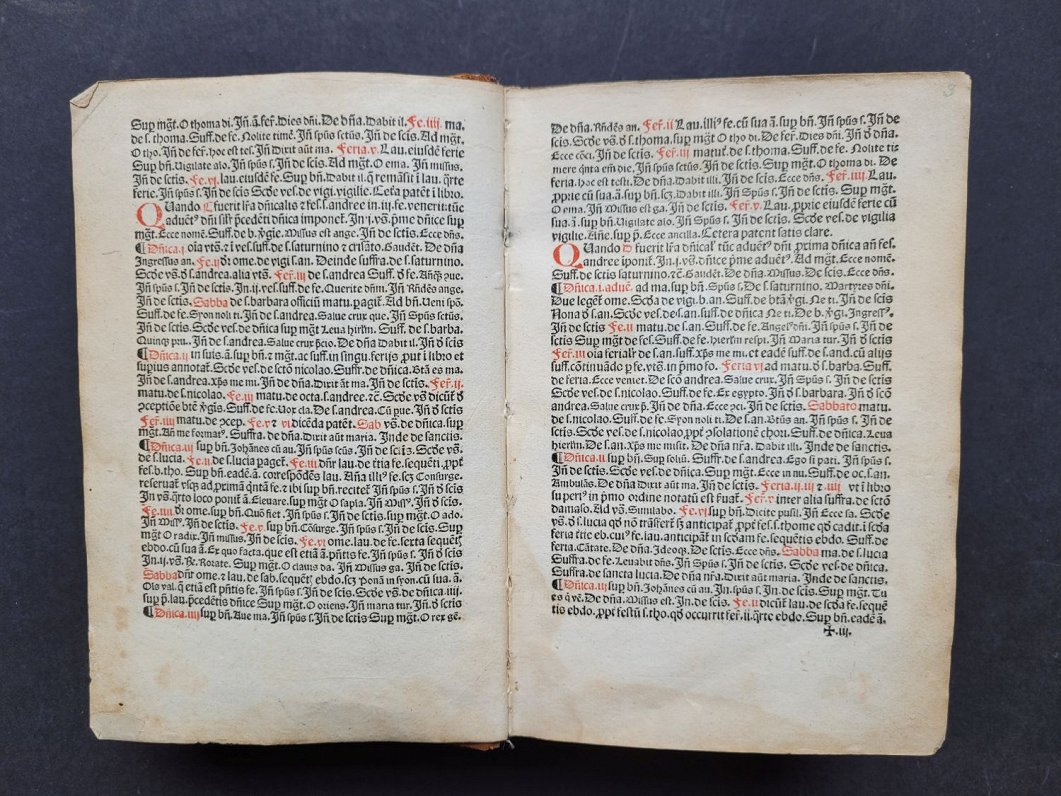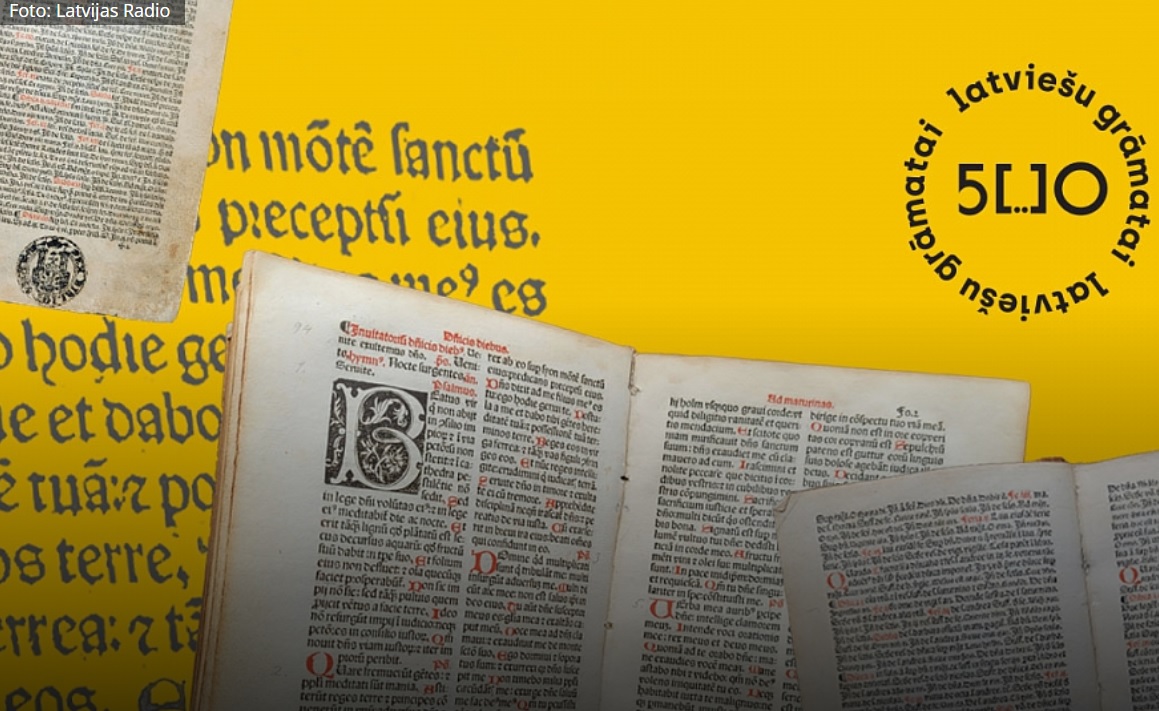More about the cycle of events can be discovered at https://www.gramatai500.lv/ and for more about the Latvian National Library and its constantly changing exhibitions and collections, visit: https://www.lnb.lv/.
A signal of change in cultural memory – Riga's first and only breviary
A 'breviary' in the Roman Catholic Church practice is a handbook for clergy containing specially selected parts of the Scripture, hymns and liturgical anthems. The first and only Riga Breviary was printed in Paris in 1513 for the diocese of Riga.
It is unique because of its introduction, highlighting among other events in the Livonian lands the Battle of Lake Smolin on the Pskov side in 1502. Its central figure is Walter von Plettenberg, the most well-known of Masters of the Livonian Order of Knights. The Latvian Radio-1 broadcasting programme "Tracing the Footsteps of Books. 500 years of Latvian Books" explains more about the significance of this small Riga Breviary.
The story begins in September 1502, when a large Livonian regiment of about 5 000 men led by Walter von Plettenberg, Master of the Livonian Order, was confronted by a Russian regiment of about 18 000 men at Lake Smolin on the Pskov side, led by the military commander Daniil Shchenya under the instruction of Tsar Ivan III. The combined forces of the Livonian Confederation, comprising a cavalry led by the Master as well as the Land Marshal of the Order Johann von der Breul, known as Plater, and Archbishop of Riga Michael Hildebrand. With their tactical and skilful fighting, the Latvian and Estonian infantry achieved a victory against the odds. Using diplomacy to avoid further military conflicts with the Russians, Plettenberg managed to consolidate peace on Livonia's eastern border until 1558.
The Battle of Smolin is mentioned in the introduction to the Riga Breviary of 1535, which is the protagonist of this event. As we shall soon see, the introduction to this breviary is one of the reasons that make this small, yet rather thick book a unique artefact in the context of Latvian and European book publishing. Only one copy of the possibly hundreds of copies of the Riga Breviary has survived, and I am going to take a look at it at the Academic Library of the University of Latvia.

Riga Breviary. Breviarium secundumritum et usum sancte rigensis ecclesie. [Breviary of the second rite and use of the church of St. Rigensis] 1513. Two-colour print. The only known copy. ALUL
Archbishop Jasper Linde († 1524) commissioned a breviary for the Riga Diocese from the book printer Wilhelm Corver. Although Corver later became a pioneer of book printing in Antwerp, he was based in Paris when he received the order and during its completion. This raises questions among scholars, such as: why did Linde commission a Parisian printer to print his book, when all centralised book printing at the time took place in Lübeck? No answer has been found so far. But there is much that has been discovered about the Riga Breviary that I asked these historians to share their views: the head of the Manuscripts and Rare Books Department at the Academic Library of the University of Latvia (ALUL), Aija Taimiņa, and the lead researcher at the National Library of Latvia (NLL), Gustavs Strenga.
An attempt to build a shared memory
"What we see here in the Riga Breviary and the establishment of the Feast of the Exaltation of the Holy Cross as an important feast, and the commemoration of this battle, is the first attempt to create a common memory of Livonia. Because up to that point, up till 1504, when this decision was made, there are different communities of memory represented at the Landtag of Livonia. There is an eternal conflict of memories between the Livonian branch of the Teutonic Order and the Archbishop of Riga, the Church of Riga and the Cathedral Chapter. The Livonian Church remembers that they were the ones who evangelized and baptized this country, and that the Teutonic Order came after them. The Teutonic Order, on the other hand, claims: "No, no, we are the most important here", says Gustavs Strenga, "This is the first attempt. Of course, the Reformation disrupts the whole common memory. But the Riga Breviary with its introductory text is, in this sense, a symbolic signal of the change of cultural memory."
Archbishop Hildebrand of Riga does not get to witness the publication of the Breviary mentioned. "Jasper Linde, who commissioned this lovely little book, it is his job to remember Michael Hildebrand," says the lead researcher at the NLL, explaining that, as in all medieval institutions, with the succession of office comes the need to commemorate one's predecessors.
It would be an overstatement to claim that the Riga Breviary was created solely in memory of Hildebrand. It is made for the benefit of the Livonian Church, Strenga explains. "Commemorating with honour everything that has been worthy of commemoration and followed this event. Simply to show continuity. Possibly this was the only reason," adds Aija Taimiņa.

Riga Breviary. Breviarium secundumritum et usum sancte rigensis ecclesie. [Breviary of the second rite and use of the church of St. Rigensis] 1513. Two-colour print. The only known copy. ALUL
In those days, it was not common for someone to write about the recent past in a liturgical manuscript. "What an extraordinary situation, however, when the introduction to a book intended for worship, for prayer, mentions war. Although only ten years have passed, this indicates one thing: this event is of great value and importance," says the head of the Manuscripts and Rare Books Department of the Academic Library of the University of Latvia. The lead researcher at the NLL agrees with her, yet has a partly opposing view:
"What is happening in Livonia at the beginning of the 16th century is not only the trauma of war, but an attempt to make this war a very important propaganda tool in order to gain the support of Western Europeans in the fight against the Muscovites, which is extremely vital for them."
The researchers show a very important manuscript from this era: indulgences, for the absolution of sins and the instructions on the use of such an indulgence. "It's one of the really most sought-after and most widely distributed single sheet publications in Europe."

Riga Breviary. Breviarium secundumritum et usum sancte rigensis ecclesie. [Breviary of the second rite and use of the church of St. Rigensis] 1513. Two-colour print. The only known copy. ALUL
Back to the Riga Breviary. The aim of the liturgical manuscript is not only to remember the past or to commemorate the dead, but to promote spiritual and religious life, Gustavs Strenga emphasises. He continues: "In this case, we have in front of us a book that was intended for a specific audience, the clergy, and the priests. This is the unique attribute of medieval liturgical manuscripts and also of printed breviaries; why we call this the Riga Breviary – every church, or rather every archdiocese in Europe, could decide what kind of liturgy or what features they wanted in their books.
From the outset – before printing – they were manuscripts; later, all over northern Europe at the end of the 15th century, and from the 16th century onwards, the Scandinavian dioceses in Lund, Uppsala, and elsewhere, started printing the missals and also breviaries for their dioceses. Then, when the Catholic Church reforms itself after the Council of Trent, this practice is what disappears; there is only one type of breviary, there is one kind of missal."
Asked if there are other breviaries with similar introductions to the Riga Breviary, Gustavs Strenga and Aija Taimiņa say they did not know of any, had not come across any, but did not exclude the possibility that such breviaries could exist.
What have we learned? The significance of the Riga Breviary
The opening text of the Riga Breviary, published in 1513, established a new feast in Livonia: the Feast of the Exaltation of the Holy Cross, which the Church set the 14 September as the celebration date. The liturgical scheme of this feast is very similar to the Easter liturgy, the most important event of the Christian liturgical year. And the commemoration of the Battle of Smolin is one of the components of this liturgy.




























